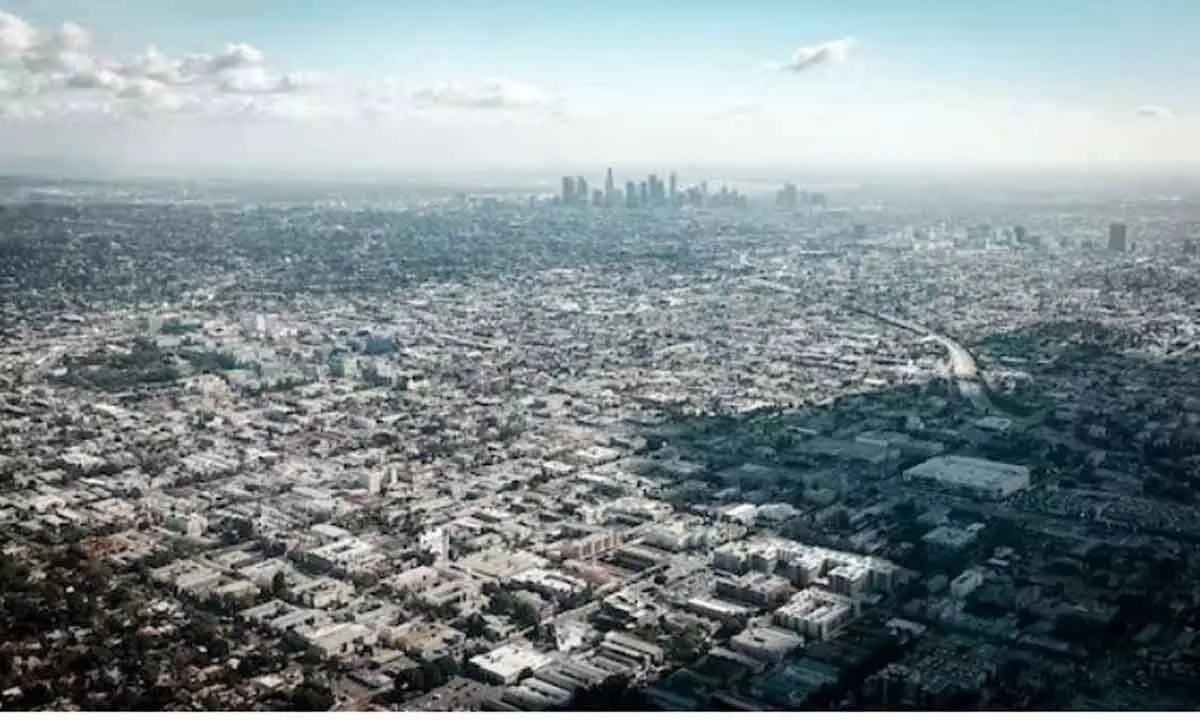Live
- MyVoice: Views of our readers 14th December 2024
- Soros & Gandhis links raise many disturbing questions
- Record additions in non-fossil fuel energy in India
- Indian teens’ grand arrival on world stage
- Chanchalguda Jail Officials Say They Haven't Received Bail Papers Yet, Allu Arjun May Stay in Jail Tonight
- BJP leaders present evidence of illegal voters in Delhi, urge EC for swift action
- Exams will not be cancelled: BPSC chairman
- Nagesh Trophy: Karnataka, T.N win in Group A; Bihar, Rajasthan triumph in Group B
- YS Jagan condemns the arrest of Allu Arjun
- Economic and digital corridors to maritime connectivity, India and Italy building vision for future, says Italian Ambassador
Just In
It's the era of megalopolis now


California (The Conversation): On November 15 2022, a baby girl named Vinice Mabansag, born at Dr Jose Fabella Memorial Hospital in Manila,...
California (The Conversation): On November 15 2022, a baby girl named Vinice Mabansag, born at Dr Jose Fabella Memorial Hospital in Manila, Philippines, became – symbolically – the eight billionth person in the world. Of those 8 billion people, 60 per cent live in a town or city. By the end of the 21st century, cities will account for 85 per cent of Earth's predicted 10 billion inhabitants.
Cities don't only grow by the number of inhabitants. The more people they host, the more services (public transport, energy infrastructure, water supply) they need, the more governance they require and the more resilient their economy has to be. It might be surprising then to learn that there is no single definition of what a city actually is.
In medieval times, cities from London to Seoul were delineated by their walls. And even well into the 20th century, the idea of a city's limits still held water. Today, if the process of urbanisation still brings to mind the biggest pre-millennial metropolises (Tokyo, São Paulo, New York or Mumbai), they represent nonetheless a decreasing proportion of all the world's cities. By contrast, in the more rapidly growing urban centres, such as Lagos, the geographic extent of a mayor's official jurisdiction often ends long before the populace it serves does. Its economy, meanwhile, is often deeply intertwined with those of the neighbouring cities.
The question of where to draw the line between what is and what is not a city – not to mention where one ends and another begins – is getting harder to answer. As the world moves towards total urbanisation, settlements are spreading out by merging into one another to create what urban experts term "megalopolises." The largest of these mega-cities already exceeds 60 million people. In China, the region of Guangdong province around the Pearl River estuary now known as the Greater Bay Area effectively merges 11 cities, from Macao all the way around to Guangzhou, Shenzhen and Hong Kong. With a total population of over 70 million inhabitants, it counts 2 million more people than the entire population of the UK, squeezed into roughly a fifth of the area. In economic terms, it looms just as large: at USD1.64 trillion (1.39 trillion pounds) in 2018, its GDP represents 11.6 per cent of China's total. On the west African coast, meanwhile, the 600km stretch between Abidjan, Ivory Coast and Lagos, in Nigeria, is rapidly catching up. Experts predict that by 2100, this agglomeration of nine cities will be the most densely populated on earth, with up to 500 million people. Cities only really started growing in the mid-18th century when we began to build machines that would propel us much faster – and further – than any technology invented so far. For the first time, cities and London, in particular, broke through the threshold of around 1 million people in size that had dominated the urban world hitherto. Some cities, including Chicago and New York, grew upwards as the technologies of the steel frame and the elevator enabled those with the resources to erect the early skyscrapers, those "cathedrals of commerce."
With the invention of the automobile, many cities, such as Los Angeles, have grown outwards, despite widespread resistance to the idea of urban sprawl. We still largely depend on the internal combustion engine to move between different activities, typically home and work. However, over the last 50 years, the advent of computers and networked communications has meant that people can now live at huge distances from their colleagues. This blurs the physical boundaries of any city.
Boundaries will no longer have the same meaning as they did before the first industrial revolution in Britain in 1830. Scholars agree that as cities get bigger, they generate economies of scale that increasingly dominate their economic growth and prosperity.
Evidence suggests that the urban world is even more complex. Cities increasingly resemble biological systems more than they do mechanical systems, with transportation networks reaching out into the hinterlands around them resembling arboreal fractals.
The emerging urban world is vastly different from anything that has gone before. Trying to determine the physical limits of the city remains important. In figuring out how to reckon with this new complexity, however, it may well be too superficial.
(The Conversation)

© 2024 Hyderabad Media House Limited/The Hans India. All rights reserved. Powered by hocalwire.com






